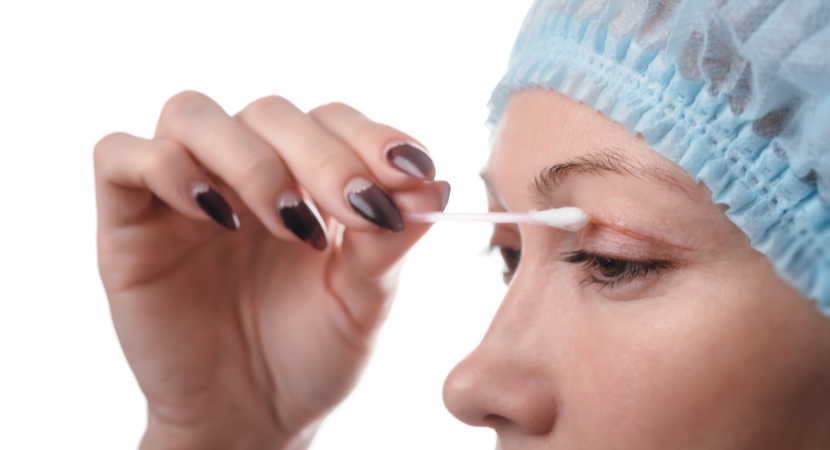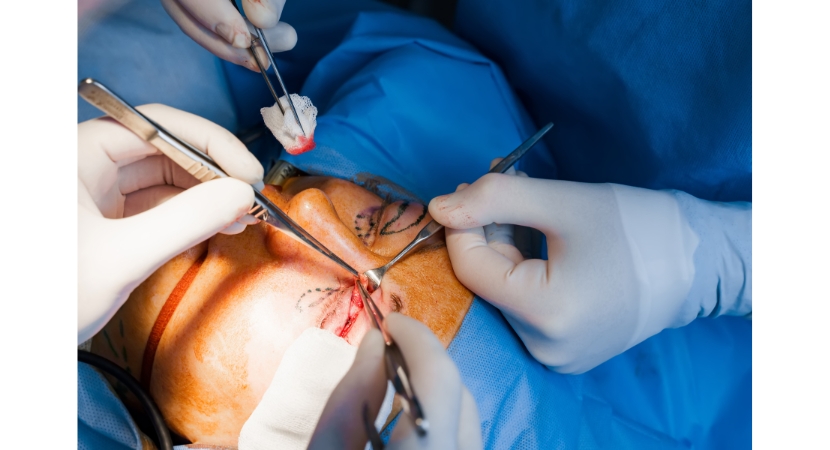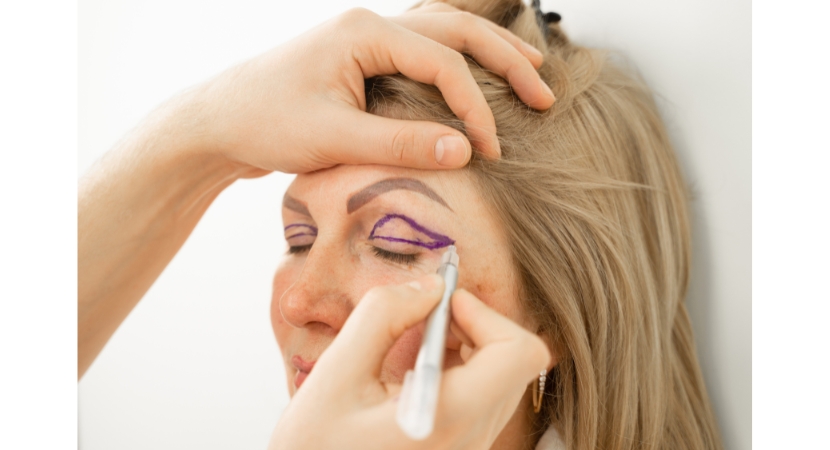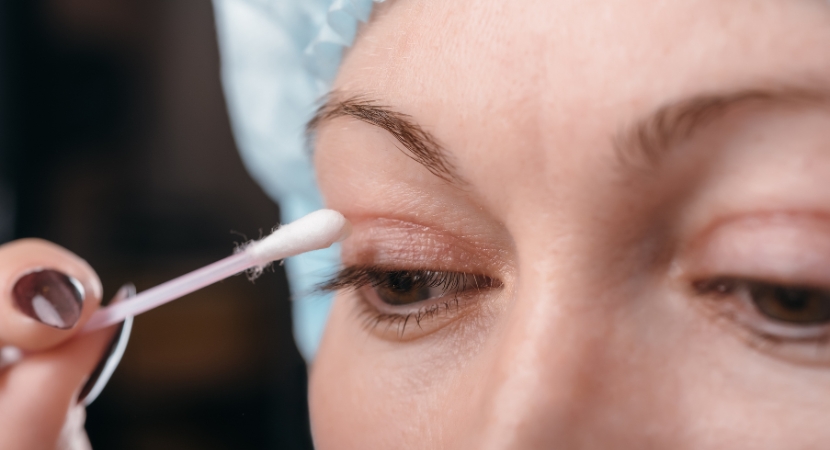
Our main facial features are our upper eyelids and eyes. When we look at someone, we direct our attention to this area of the face and because of this, our eyes can easily detect asymmetries or variations in the eyelids. Plastic eyelid surgery has many potential aspects of failure. The eyelid surgeon specializes in eyelid surgery and has extensive knowledge in revision surgery. Talk to a specialist who specializes in eyelid surgery if you want to avoid revision surgery.
A highly skilled surgical procedure called eyelid revision surgery is used to correct an earlier eyelid surgery performed by other doctors. Removing excess skin and fat from the upper and lower eyelids is known as blepharoplasty, which is one of the most popular surgeries in the world.
If the patient has had eyelid cancer or injuries, they may additionally need surgery around the eyes. While many patients receive positive results, some suffer from scarring, asymmetry, disfigurement, or other eyelid problems that may require revision surgery. Oculoplastic surgeons are needed for eyelid revision.
What is Revision Blepharoplasty?
Revision blepharoplasty, commonly referred to as eyelid revision surgery, is a second surgical treatment used to address problems that have developed or improve the results of a previous eyelid procedure. Revision surgery may be suggested if the patient feels dissatisfied with the results of a previous blepharoplasty, perhaps due to a troubling defect or deformity resulting from the procedure.
Depending on the complexity of the problem, revision blepharoplasty is more difficult to perform than the initial treatment. The most common problems addressed by revision blepharoplasty include lower eyelid retraction, scarring, rounding of the corners of the eyes, indentations of the upper or lower eyelids, or residual bags and bulges.
Very typical side effects of blepharoplasty include lateral drooping of the eyelid and, in more extreme cases, loss of intercanthal slope and ectropion. These modifications can result in severe eye pain, discomfort, and loss of vision, in addition to being catastrophic to vision.

Indications for Revision Blepharoplasty
There are several reasons why a patient may need revision blepharoplasty surgery, but most of the time patients are dissatisfied with the results of the initial eyelid procedure. Blepharoplasty treats a very delicate area of the face; thus, complications can arise if the treatment is not performed by a highly skilled oculoplastic surgeon.
From mild scarring to severe eyelid malposition that compromises the integrity of the eye and its ability to function properly, the severity of the problem can vary greatly from person to person. The following are the most typical reasons for blepharoplasty revision:
• Scarring: Although the eyelid skin usually heals quite well, there are times when it can be too much too fast. As a result, there may be visible scarring and lumps near the incision sites that some patients may not have anticipated before eyelid surgery. If scars are the reason for your desire to change the shape of your eyelids, scar reappraisal procedures can usually treat them successfully.
• Undercorrective eye surgery: When the initial eyelid surgery does not correct underlying problems or concerns, another problem may develop. In this case, the initial blepharoplasty or ptosis surgery did not remove enough skin and/or the muscle that lifts the eyelid was not tight enough. When this happens, the face looks heavier and older. The upper field of vision may be blurry, and the eyelids often look swollen and tired.
• Excessive removal of fat or skin: Initial eyelid treatments that remove too much skin can be quite problematic for the patient. Lower eyelid contour changes that cause retraction and increased eye exposure are the most serious consequences. For example, if the soft tissue and skin of the lower eyelid is removed excessively, the colored iris and more of the white sclera (the outer layer of the eyeball) can be exposed. This is because the lower eyelid hangs below the sclera.
Changes in lower eyelid retraction are complex. They can have disastrous effects on an individual's appearance and cause agonizing pain and dryness. The lower eyelids droop, exposing more of the white of your eye (showing sclera) normally. Lower blepharoplasty revision can restore the eye contour and give it a more natural shape, although this type of problem is probably the most difficult to resolve.
Improper eyelid alignment is another common problem when too much skin or fat is removed. The result can be an unnatural, unbalanced and asymmetrical appearance. In order to get everything in order and restore the previous symmetry, a blepharoplasty revision can be performed.
If too much fat has been removed from the area, the under-eye area may also appear sunken and hollow. The lower and/or upper eyelids can be volumized for a more youthful appearance by injecting fillers or fat transfer.

Problems treated with Revision Blepharoplasty
Revision Blepharoplasty is often done to address one of the following problems:
• Undercorrection: By removing less tissue than necessary, a second surgery can be performed to better improve eyes that were previously undercorrected.
• Overcorrection: Too much tissue removal can lead to extremity eyes. A dry eye can result from overcorrection that prevents the eye from closing completely. A misshapen appearance is sometimes caused by excessive tissue removal.
• Ptosis: The upper eyelid may droop as a result of aging or an anatomical problem. Ptosis can be treated with blepharoplasty by some surgeons, although the procedure is different for this problem than for cosmetic eyelid rejuvenation. The elevator muscle can still pull on the upper eyelid after blepharoplasty, causing it to droop. Ptosis can sometimes be caused by blepharoplasty and unintentional damage to the upper eyelid lifting muscle.
When incisions are made too high in the upper eyelid, visible scarring can result. Usually, incision scars are effectively camouflaged as they are made in the natural crease of the eye.
• Entropion: A disease known as entropion causes the eyelid tissue to turn inward.
• Ectropion: Ectropion is a condition in which the eyelid tissue bulges outward.
When one or more of these side effects occur, revision blepharoplasty can improve the appearance of the eyes. However, complete correction may not be achievable depending on the severity of the problem. Your board-certified surgeon should be honest with you about the expected results of your treatment.

Consultation for Revision Blepharoplasty
You will need to provide a medical history when you arrive for your consultation as your doctor needs to be aware of any serious conditions, including heart disease and hypertension. Your team should understand the details of your previous facial surgery. It can be particularly helpful to include old photographs from before the original surgery.
Since your first surgery, what feature of your eyelids and face bothers you? Your team will explore possible solutions with you. The ideal outcome requires a shared understanding of goals, expectations and outcomes.
Any eye disorders, such as dry eye, that may affect or alter the surgical plan or be a problem after treatment are also reviewed during your appointment. Depending on the results of your examination and consultation, the doctors may suggest a completely different procedure to achieve the desired results. Sometimes a technique such as a brow lift, mid-face lift, or fat transfer is the ideal way to address facial structure and initial surgical results. Your team should be familiar with eye conditions and problems.
Preparing for Revision Blepharoplasty
Patients who have been scheduled for revision blepharoplasty will receive direct preparation advice from the surgical team. Patients may be advised to stop smoking, if applicable, and switch to another medication or supplement, as well as avoid others that may increase the risk of bleeding, in the weeks leading up to this surgery.
Procedure for Revision Blepharoplasty
Anesthesia
Local anesthesia or light sedation is commonly used for revision eyelid surgery. Sedation will allow the patient to relax throughout the process. If revision eyelid surgery is being performed in conjunction with other treatment, or if the patient is really worried and anxious, the surgeon may recommend general anesthesia.
General anesthesia will be administered by a qualified anesthesiologist or anesthesia nurse, who will also monitor the entire process to observe the patient's reaction to the anesthesia. An experienced and qualified anaesthetist can identify an adverse reaction to anaesthesia early and take precautions to reduce risks.

Revision Lower Blepharoplasty
The surgeon will make small incisions after the patient is anesthetized to ensure that any scars that develop afterwards are hidden.
Small, inconspicuous incisions may be made in the natural folds of skin under the lower eyelids. Through these incisions, the surgeon will remove excess fat and skin; he may also tighten the sagging muscles underneath.
The surgeon may use soft tissue fillers or fat transfer if the area under the lower eyelids appears depressed. The surgeon will carefully close the wounds with sutures after the procedure is complete.
Revision Upper Blepharoplasty
After the patient is given general anesthesia, the surgeon will make incisions in the natural creases of the upper eyelid. This reduces the visible scarring from the procedure.
To treat the sagging effect of the upper eyelids and any partial blockage of vision, the surgeon will carefully cut away excess skin. He will also tighten the underlying weak muscles.
The surgeon will lift and reattach the remaining skin to provide a more refreshed and youthful appearance once the sagging skin is removed. Once the surgery is complete, the surgeon will use sutures to close the wounds.
Revision Transconjunctival Blepharoplasty
Although there are excessive fat pockets around the eyelids, the surgeon may advise the patient to have a revision transconjunctival blepharoplasty if the eyelid skin is not sufficiently lax. For patients with less visible bags under the eyes, this procedure is less invasive and more appropriate.
After administering anesthesia, the surgeon performs this revision eyelid surgery by making several small incisions in the lower eyelid. Through these incisions, additional fat pockets will be excised. This surgery does not involve skin removal or muscle tightening. There will be no external scarring because the incisions are made inside the eyelids.
Recovery after Revision Blepharoplasty
Recovery times vary greatly from person to person and often depend on the type of corrective surgery performed. For example, the procedure required to fix an overcorrected eyelid may take longer in the operating room, resulting in a longer recovery. On the other hand, revision surgery for undercorrection is less difficult and usually has a faster recovery time.
You should expect some degree of swelling and bruising around your eyes, regardless of how your eyelids are fixed during revision treatment. After a few weeks, these adverse effects gradually disappear. It is typical to experience some blurred vision, tearing and light sensitivity for the first few days after surgery. Most of the time the discomfort is manageable and minimal with over-the-counter pain relievers. Prescription pain relievers may be prescribed if needed.
Risks of Revision Blepharoplasty
After blepharoplasty, there is a likelihood of short and long-term problems and adverse effects. Because the surgeon must bypass scar tissue that has developed since the initial treatment, these risks may be increased for patients undergoing revision surgery. This requires a serious approach by the surgeon regarding the person undergoing revision blepharoplasty.
The side effects of revision blepharoplasty often resemble those that can develop after primary eyelid surgery. These include the potential for scarring and infection. Patients should expect mild to moderate swelling, bruising, and pain after their revision surgery. The best healing can be accelerated with regular follow-up and communication with your team.
Is Revision Blepharoplasty Dangerous?
Although patients seeking revision blepharoplasty may be at a higher risk for complications, these risks can be effectively handled by an experienced surgeon. When a patient is dissatisfied with the results of eyelid rejuvenation surgery, they should carefully evaluate their expectations for revision and compare them to the prognosis offered by a qualified, board-certified plastic surgeon.
Revision blepharoplasty carries risks, although they do not always mean that the treatment is dangerous. The main problem is performing surgery quickly with a doctor who is not adequately prepared to deal with poor surgical outcomes. This can worsen the original problem or cause unwanted problems.
How much does Revision Blepharoplasty cost?
Depending on the details of each patient, revision eyelid surgery will involve varying degrees of correction. Surgery has several costs including anesthesia, surgical facility fees, medical supplies, and the surgeon's experience, which is represented in their fee schedules. You can anticipate a complete breakdown of costs and a discussion of the details of your treatment and how it will improve your appearance if you choose a good office for your revision surgery.
Conclusion
Revision blepharoplasty is a surgery that should only be performed by exceptionally qualified, surgical specialties with ample experience. Primary care physicians and specialists who perform facial and orbital surgery should be familiar with the anatomy, technique, and risks associated with eyelid surgery. The results of revision blepharoplasty have been mostly positive, but several problems have been documented over the years. Anyone doing blepharoplasty should be qualified to handle any complications that may arise. When done correctly, it can significantly boost patients' confidence and self-esteem.


